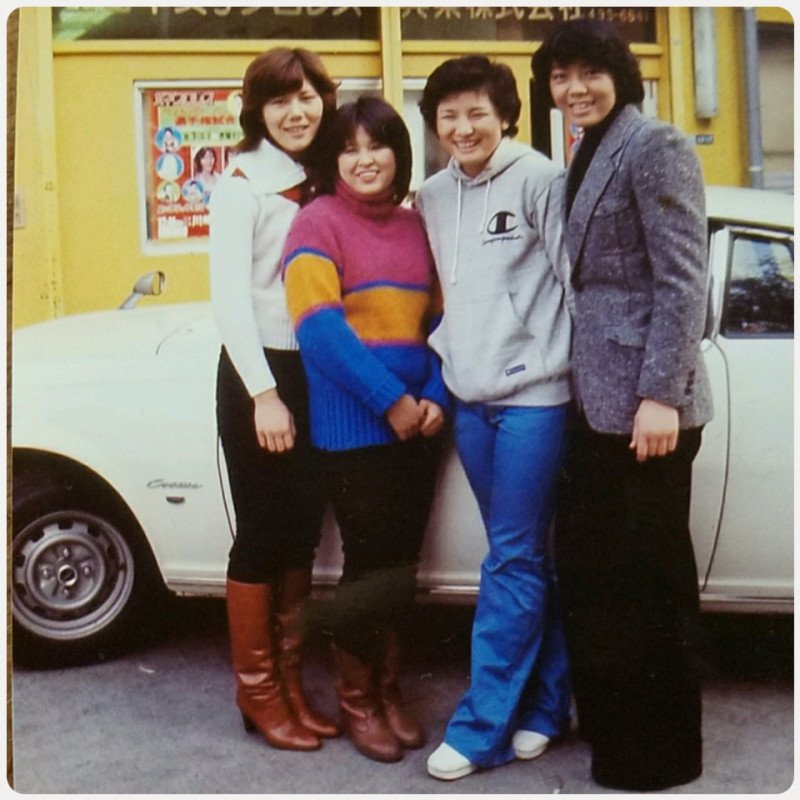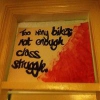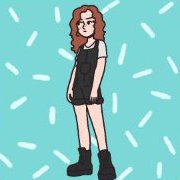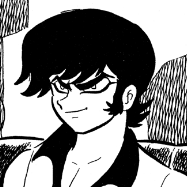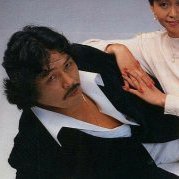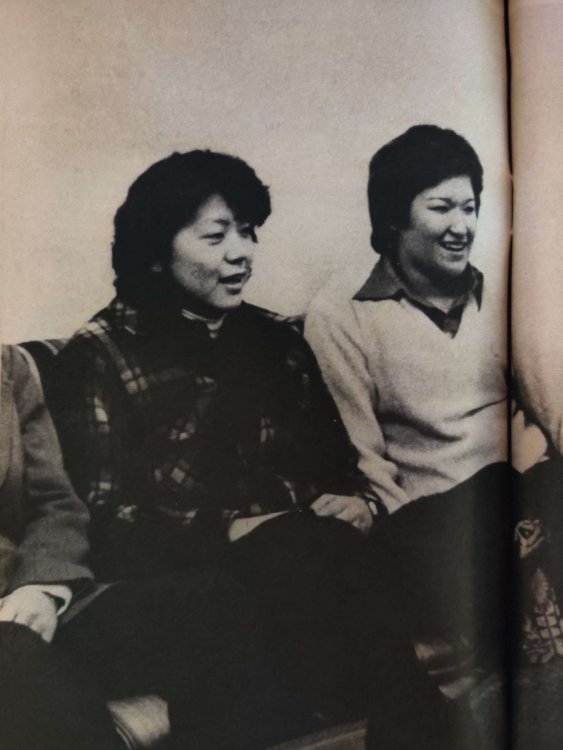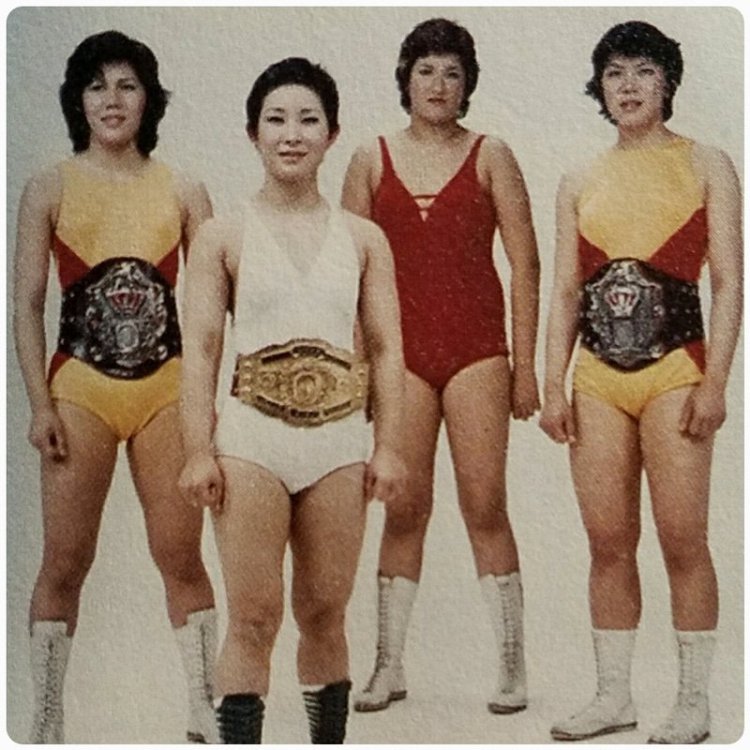-
Posts
54 -
Joined
-
Last visited
About Noah's_Savior
- Birthday 08/05/1996
Contact Methods
-
Website URL
https://isayyousayheisei.home.blog/
-
Twitter
@NOAHs_Savior
Profile Information
-
Location
Dallas/Ft. Worth
Recent Profile Visitors
647 profile views
Noah's_Savior's Achievements
Apprentice (3/14)
-
Rare
-
-
-
-
Recent Badges
-
Yukari Lynch "the female Giant Baba", real name Yukari Kawamura Yukari Lynch made her debut in AJW at the young age of 14 in 1975 after being scouted by AJW for her height, (her billed height is 180cm but Weekly Asahi lists it as 185cm), and because of her unique look due to being half white. Because she was biracial, Yukari was made into a heel and would team with whichever foreigners were on tour with AJW but she was promoted in the press with Mach Fumiake and an early Beauty Pair as their villain before Black Pair formed. She didn't stick with wrestling long enough to become skilled, she was reportedly slow in the ring and relied on elbow strikes and kicks for offense, and she reportedly decided to retire early in her career because she was sick of being a villain. After retirement she became a kickboxing instructor and worked as a hostess where she would be arrested for drug possession in April 1985, the possible reason why she was thoroughly erased from AJW's official history; she's only seen or mentioned in a match clip from the 1988 AJW home video release, ZenJo Fighting Again.
-
We need to add Mercedes Moné to the top of the list.
-
Beauty Pair should be in no doubt, any Japan ballot excluding them tells me that person doesn't know the history of the sport in Japan and how famous Beauty Pair were and how them and Mach Fumiake are the blueprint for joshi wrestling as we know it. Good luck trying to find wrestlers in the mid 70s bigger than them or Antonio Inoki and I mean that as entities in the consciousness of the Japanese public, in and out of the ring. AJW was still in its carny form and the Beauty Pair boom got them to actually formalize their business model and create standard practices both good and bad, like yearly auditions, the eventual height requirement, age retirement starts during Maki's WWWA title reign, women with idol-like looks, idols are accepted in the joshi wrestling space ie Mimi Hagiwara and Jurina, AJW learns how to make merchandise and leads the nation's promotions in the merchandising game IMO. There are only a handful of wrestlers in Japan, male or female, as important as Beauty Pair and a lot of people are showing how narrow their knowledge of Japan and the sport is with their exclusion.
-
Jenne Yukari Debut - October 1988 Retired in 1996 Jenne Yukari is a wrestler of note because she's the most blatant example of The Rose of Versailles and Takarazuka Revue's influence on young women and popular media during the last quarter of the 20th century. Her entrance gear is the most complete cosplay I've seen of a Takarazuka Revue Top Star's finale feathers, and specifically, Yukari cosplayed the main character of The Rose of Versailles, Oscar Jarjayes. Jenne's (ジェンヌ) name is a reference to Takarazuka as タカラジェンヌ/Takarasienne, is an official term used for Takarazuka actresses. It's ironic that in previous decades the crossover between Takarazuka, The Rose of Versailles, and joshi wrestling is seen in both the fanbase and on the rosters but during the 90s it grinds to a halt while Takarazuka goes on to have one of their most successful decades in their then 80-year history.
-
It's kind of wild living in a time where NJPW, AJPW, and NOAH are having honest exhibition matches with top joshi wrestlers and continue to show support for it. Hell, Muto said at his retirement show that joshi wrestling is a strength Japanese wrestling has against the rest of the wrestling world. I'm interested to see if or how the exhibition matches on major men's shows can actually lead to new fans for the joshi promotions.
- 446 replies
-
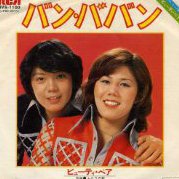
Comments that don't warrant a thread - Part 4
Noah's_Savior replied to TravJ1979's topic in Pro Wrestling
Question for WWF experts, who's James Troy and what did he do for the WWF? This letter is from the January 1988 issue of AJW's Ring Star magazine. -

Puroresu History on Indefinite Hold [NEW UPDATE]
Noah's_Savior replied to KinchStalker's topic in Puroresu History
I feel you on this, ultimately you need to find the healthier and hopefully healthiest route for you during this lifetime. Burning yourself out doesn't help a research project in the long term and getting back into other hobbies can sometimes recharge you so that when you're ready to get back on the saddle, you can make great strides. All the best Cameren and hope everything works out for you. -
Oscar Ichijou March 1957- May 1975 Debuted at age 17 and the first tragic death of an active joshi wrestler, (there had been rookies that had died before Oscar and before Plum Mariko in 1996). Oscar Ichijou's name and choice of formal attire represent a "what if" for women's wrestling as both foreshadow what would become the sport's popular image just a year after she suffers a fatal injury, (I've read neck injury but haven't found a source that isn't a fan's blog to confirm), while training at the AJW dojo. The January 1975 issue of Girl's Wrestling speaks of Oscar's increasing popularity and that she's flying higher on the wings of young power, a popular phrase during Mach Fumiake's time in AJW. She's one of two joshi wrestlers wearing a pants suit in the earliest documentation that I've personally seen, this fact along with the ring name that she chose, Oscar was a wrestler that was openly showing her fandom for some of the most popular media properties for girls her age, The Rose of Versailles and The Takarazuka Revue. The iconic character of the Rose of Versailles is the female captain of the Royal Guard turned revolutionary, Oscar de Jarjayes, a highly-respected woman that's adored by both the men and women in her company and social circle for living beyond the boundaries of normal femininity. The ever increasing popularity of the Rose of Versailles and its stage adaptations by the Takarazuka Revue were the impetus for Fuji Tv producer, Hitoshi Yoshida, to create an androgynous, singing tag team to attract that demographic: Beauty Pair.
-
Noah's_Savior changed their profile photo
-
Haruko Ogawa - born in January 1950 in Niigata, Niigata Prefecture. Haruko moved to the major port city of Nagoya and graduated from barber school, but after spending time in the profession she joined AJW and made her debut in April 1969. Was the Japanese lightweight champion in January 1973, billed at 150cm, and her hobby was listening to the blues.
-
Shigeko 'Peggy' Kuroda - born in 1953 in a remote area of Hokkaido. Three years after graduating junior high school, she moved to Iwata City, Shizuoka Prefecture and worked for textile company, Teikoku Sen-I. Shortly after she left the company and joined AJW after seeing a show at age 19. She was named Rookie of the Year at the Professional Sports Festival hosted by Professional Sports Council in 1972, she would also win the Japanese women's middleweight championship in October of the same year. Billed height: 163cm
-
Makiko 'Maki' Ueda (マキ上田)- born March 8, 1959 in Tottori, Tottori Prefecture. Originally set on playing volleyball through high school and having an aversion to the idea of wrestling in a swimsuit, Maki isn't set on becoming a wrestler when her dad first brings up the idea. Maki's own desire to leave her small town and her dad's persistence lead her to dropping out of high school and joining AJW in 1974, she's said in an interview that due to the lack of interest at the time there were no formal auditions or pro-tests for potential wrestlers and after a year of training she debuts on March 19, 1975. A year later Maki and Jackie Sato are put together to form Beauty Pair and create the first major boom for AJW, while Mach Fumiake made AJW popular with general audiences and young people she doesn't mobilize an entire fanbase demographic like Beauty Pair did. A year after Beauty Pair forms there's 600 applications sent for the 1977 auditions, now held at the Fuji TV studios. Maki Ueda is the first woman in AJW to hold the WWWA singles championship, the WWWA tag championship, and the Hawaiian-Pacific/All-Pacific titles. Due to personal differences with Jackie Sato, anxiety about life-threatening injury (Maki is a part of AJW when Oscar Ichijou suffers a fatal neck injury while training in the dojo), and missing her mom's passing due to schedule, Maki Ueda makes the decision to retire in late 1978 and has her retirement match against Jackie Sato on February 27, 1979.
-
Kyoko Okada - born in 1949 from Tajiri Town, Miyagi Prefecture Had wrestled prior to joining AJW from retirement in the summer of 1972. She was originally living above a hair salon that she was learning at in Nakameguro before quitting after half a year to become a wrestler. Signature move is the Cobra Twist. (Information from January 1973 issue of Daily Sports Girls Wrestling) [Her previous wrestling years may have been 1968-1970 but I haven't been able to verify that as of 2023]
-
Hitoshi Yoshida, (吉田斉), a tv producer at Fuji TV that went to AJW to propose and eventually create Beauty Pair. Hitoshi got Beauty Pair their record deal with RCA, promoted them on Fuji TV programming, and produced the Beauty Pair Shows in 1977 and 1978. The Beauty Pair Show were concerts featuring Beauty Pair, other singing wrestlers, and popular entertainers of the era held at the Asakusa International Theater.
-

Comments that don't warrant a thread - Part 4
Noah's_Savior replied to TravJ1979's topic in Pro Wrestling
For the year that I was working in downtown Dallas, I saw more AEW logo shirts than any specific WWE wrestler, and there was this one regular at the bars at night that would either be wearing a NJPW lion mark shirt or a Bullet Club shirt. -
corwo started following Noah's_Savior
-

2021 Wrestling Observer Hall of Fame
Noah's_Savior replied to NintendoLogic's topic in Pro Wrestling
I think it's unfair to flatly compare the Japanese wrestling business from the 00s and 2010s to the 90s and 80s. The Japanese economy beginning to stagnate in the early 90s, the birth and rise of modern J-Pop the innovation of MMA, are just a few examples that had an impact on the amount of pop cultural space got left for pro wrestling in Japan after the new millennia. Ichiro Suzuki and more Japanese baseball players finding success and fame in the MLB, and the whole baseball world, may have also taken away space in the sporting discourse for wrestlers. Under Bushiroad, Tanahashi and especially Okada being the top guys saw NJPW increase business, fanbase, and their pop cultural footprint, more than any other Japanese company that I know of during the period of the 2010s that was only stopped by an international pandemic. Tanahashi has been featured in movies and dramas, him and Okada have featured on regular television programs I'm not he biggest Okada fan but it shouldn't be denied his impact on NJPW's rise to becoming the top promotion in Japan and a major player in the international wrestling scene. It's not his, Tanahashi, or anyone else's fault that real life in Japan has fallen from the economic fairytale that was the early to mid 1980s with the residuals of that economy hitting ordinary people's pockets before corporations.
